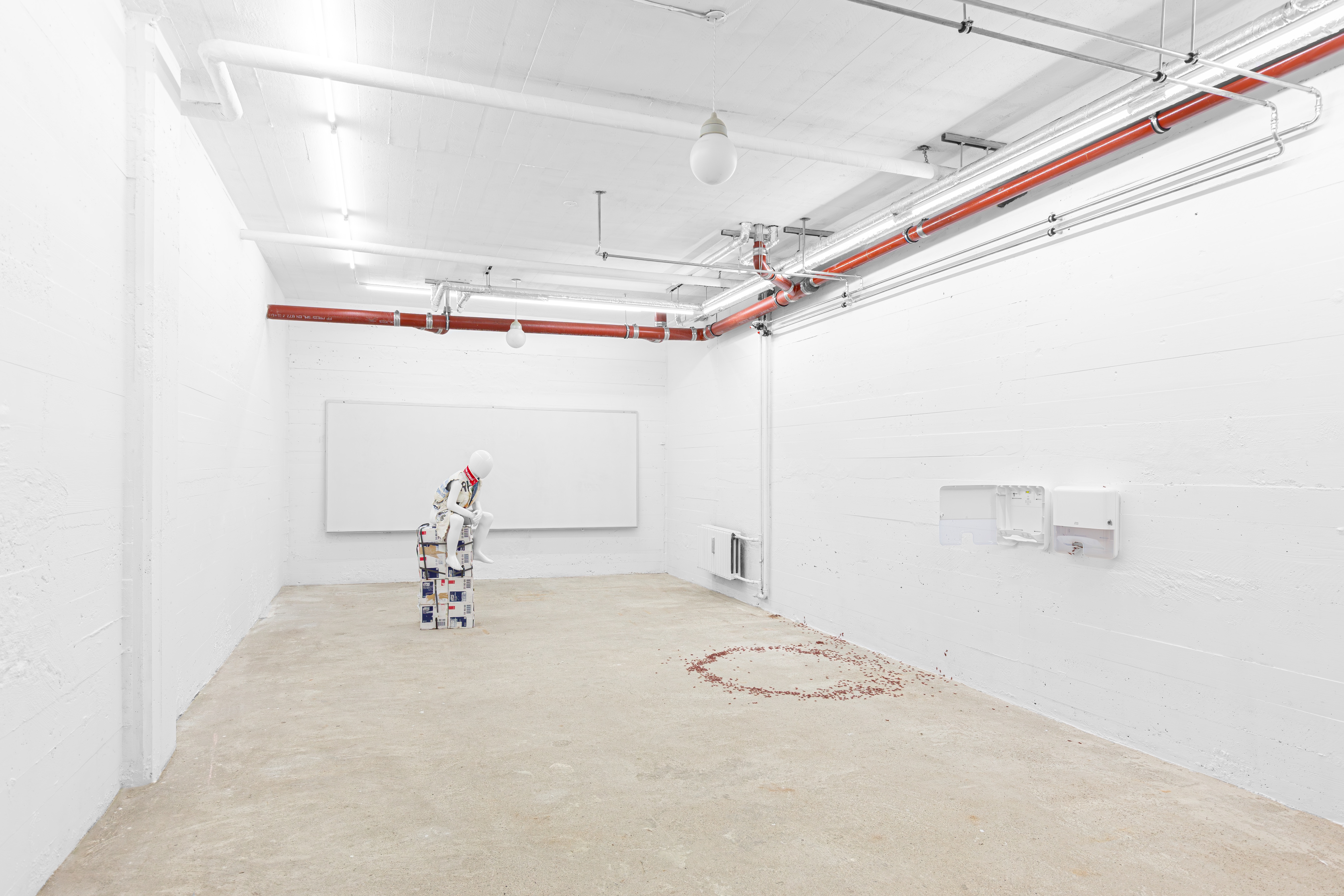MILL
Copenhagen, Matteo Cantarella
2023, December
Copenhagen, Matteo Cantarella
2023, December
Tork H2 hand towel dispensers, plastic ants,
packaged Tork M1 Centerfeed hand towel
dispensers, junior mannequin, PUER PARASITUS
vest, whiteboard, mushroom alcohol.
dimensions variable







Matteo Cantarella is pleased to present MILL, a solo exhibition by
Danish artist Sofie Winther. Comprising a multi-part installation of
hyper-functional objects, the exhibition furthers Winther’s interest in the
forms of dependence that determine relationships between individual
and systems. With MILL, Winther explores how the relations of
reciprocity, control and discipline that we enter into, simultaneously
embody oppressive structures and fundamental existential necessities.
In her ongoing work, which spans sculpture, installation and
performance, Winther questions her environment from a position
between autonomy and dependence, seeking to unveil the pervasive
matrix of the cultural, political and environmental implications that are
ingrained in our memory and presentness. Characteristic of her formal
language is the use of functional elements that, in their ubiquitous
forms, are often experienced in light of their perceived roles of
discipline and control - an array of materials which Winther pulls from
the aesthetics of public furnishings, and material encounters of the
everyday.
Outstretched across the central wall is a rectilinear large whiteboard,
which contemplatively hangs above the floor space. Conventionally
found in educational settings, whiteboards are oftentimes associated
with one’s early encounters with formalised discipline and authority.
Bringing to the fore its repressive character, Winther points at how the
production of subjectivity is intertwined with those forms that shape our
social and spatial awareness, hinting at the ontological influence that
such functional structures inherently hold on our desire and perceived
agency. In its proximity, other ordinary objects from the domain of our
public living tell us stories of production, efficiency and control. At once
activated and impractical, these sculptures now exert a tenuous
strength, hanging at viewer’s arm’s length where no discernible utility or
subjection can be found. A child mannequin, clad in a meticulously
assembled vest, glances the scene in a solitary and pensive stance.
To subvert the idea that the logic behind these systems is unassailable,
Winther intuitively introduces unexpected elements in the works. On a
closer look, one catches scattered trails of plastic ants, some
descending the walls, some peaking from an industrial hand towel
dispenser, others, instead, forming an endless circle across the floor
space. Winther does not presupposes that an unequivocally common
association exists simply in the convergence of these elements.
Through discontinuity, she enables new resonances, and reasserts
connections between different images which the viewer is ultimately
relied upon to complete. With its poetic implications, MILL alludes at the
possibility of a negation, change, and disobedience, a deviation to the
substance of the everyday. What does it take one minuscule ant to
unwind the spiral?
Text and documentation by Matteo Cantarella
Text and documentation by Matteo Cantarella
